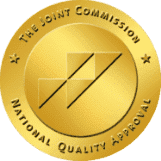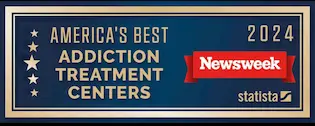Is Adderall A Controlled Substance
Is Adderall A Controlled Substance
Is Adderall A Controlled Substance?
Is Adderall a controlled substance? Read on to learn more about its classification and what it means for you.

Article Contents
What Is Adderall?
Adderall is a well-known prescription drug commonly used to treat attention-deficit hyperactivity disorder (ADHD). For some, it has also successfully been used to treat narcolepsy, which is a neurological disease that affects the body’s natural sleep and wake cycle. Adderall contains two drugs, amphetamine and dextroamphetamine. It is classified as a stimulant drug and, when misused, can have effects similar to illegally manufactured methamphetamine.
Despite growing concerns regarding Adderall misuse and abuse, the drug remains a first-choice treatment option for ADHD. Various studies show proper use of Adderall helps improve attention and focus and reduces impulsivity, all common and sometimes debilitating symptoms of ADHD. It also helps to increase dopamine levels in those that take it.
Find Help Now
Adderall vs. Adderall XR
Both Adderall and Adderall XR are effective ADHD treatments. The primary difference between the two is that Adderall is an immediate-release medication, whereas Adderall XR is an extended-release version of the same drug. This means the key ingredients of Adderall XR (d-amphetamine and l-amphetamine) are released more slowly, allowing for fewer required doses throughout the day.Research has shown that as many as 80% of children with ADHD will see reduced symptom severity with stimulant medications like Adderall. Although not everyone who uses Adderall as part of a treatment plan will develop an addiction, those who regularly take it at unprescribed doses or use someone else’s medications are at high risk for developing an addiction.1
What is a Controlled Substance?
A controlled substance is a drug or other substance that the government tightly controls administration and use of due to a high potential for misuse and addiction.2
There are five categories of controlled substances, each broken down according to their abuse potential based on the Comprehensive Drug Abuse Prevention and Control Act of 1970. The act categorizes all regulated substances into five schedules based on their potential danger.3
Schedule 1 Drugs
Schedule 1 drugs have no official or legal medical use in the United States. Schedule 1 drugs are considered the highest-risk drugs and can put users at an elevated risk for developing a substance use disorder or addiction. Drugs that are considered Schedule 1 include heroin, LSD, ecstasy, and peyote. Although now legal in many states, marijuana also remains categorized as a Schedule 1 drug.Schedule 2 Drugs
Schedule 2 drugs are also high risk. Unlike Schedule 1 drugs however, which are generally illicit, Schedule 2 drugs may be either for prescription use or could still be illegal. Some well-known Schedule 2 drugs include morphine, cocaine, OxyContin, fentanyl, Demerol, hydrocodone, methadone, methamphetamine, Ritalin, and Adderall.Schedule 3 Drugs
Schedule 3 drugs are not without addiction risk; however, the risk level is lower than that of Schedule 1 or 2 drugs. A medical provider often prescribes Schedule 3 drugs to manage illnesses, injuries, and other medical conditions. Commonly prescribed Schedule 3 drugs include ketamine, anabolic steroids, buprenorphine (Suboxone), and codeine.
Schedule 4 Drugs
Schedule 4 drugs are medications typically prescribed to treat various medical and mental health conditions. These drugs have a low risk of developing a substance use disorder with use. Drugs that are a part of this class include diazepam (Valium), lorazepam (Ativan), clonazepam (Klonopin), and alprazolam (Xanax).
Schedule 5 Drugs
Schedule 5 drugs have the least addictive risk. In general, these medications are also prescribed by your primary care provider.Is Adderall A Controlled Substance?
Adderall and Adderall XR are listed as Schedule 2 controlled substances. This means manufacturing, prescribing, and dispensing of Adderall are highly regulated. While Adderall is a Schedule 2 controlled substance, that does not mean you should not be aware of certain factors and dangers related to taking Adderall.
If you are prescribed Adderall by your primary care provider, it is vital to take it only as directed. With adequate monitoring, the risk of abuse and dependence on Adderall for those who use it to manage ADHD symptoms is low. Still, many prescriptions for Adderall are written only for short-term use, which means you need to check in with your provider monthly to assess your progress, symptoms, and any potential side effects of Adderall use.
Also, since Adderall is a controlled substance, this means that using Adderall in a manner other than that prescribed to you, such as giving it or selling it to someone else, could open the door to legal implications. It is also crucial to avoid taking Adderall given to you by someone else.
Why Is Adderall A Controlled Substance?
Adderall is a central nervous system (CNS) stimulant. This means when you take Adderall, it stimulates or energizes your nervous system. Stimulation of your CNS can lead to increased energy and improved focus.
The primary ingredient in Adderall is amphetamine, which means the drug has a high potential for misuse and addiction. Amphetamines like Adderall are controlled substances due to the potential risks of long-term amphetamine use, including dependency, addiction, and severe side effects such as cardiovascular problems and sudden death.
Why is Adderall a Schedule II Substance?
Classifying Adderall as a Schedule 2 controlled substance ensures greater oversight into the number of Adderall prescriptions written and filled annually. It also allows your primary care provider to control or limit the amount of Adderall available to you at a given time. The aim of regulating Adderall in this way is to reduce the amount of illicit Adderall available for people without a prescription. 4
It is also possible to overdose on stimulants like Adderall. Recent reports suggest stimulant drugs like Adderall accounted for more than nine hundred deaths in 2019. 5
Signs of Adderall Abuse
Most teens and young adults who misuse Adderall do so for its energizing and focus-improving benefits. High school and college students will turn to Adderall to improve their study ability or increase energy during sporting events or for fun nights out. Some may also misuse Adderall to lose weight, as appetite suppression is a common side effect of Adderall use.
Adderall abuse occurs with startling frequency on college campuses nationwide. The most recent National Survey on Drug Use and Health indicated up to 9% of high school students and 35% of college students reported abusing Adderall in the year before data was collected.6
Recommended: Adderall Rehab in Los Angeles

Common Signs of Adderall Abuse
The best way to ensure a friend or loved one receives the help they need to safely and successfully overcome an Adderall addiction is to understand the signs of misuse. As with any drug, indications of misuse will differ from person to person and are based on how much and how often you use. However, a few common symptoms of Adderall abuse occur in most cases.
These may include secretive behaviors, financial difficulties, loss of appetite, difficulty sleeping, and finishing a prescription before it is scheduled to be refilled. Doctor shopping to obtain multiple prescriptions for Adderall is common as well, and new or worsening legal problems related to purchasing or selling Adderall without a prescription are also potential symptoms of Adderall abuse.
How to Safely Withdraw from Adderall at Iris Healing®
Although the use of Adderall itself is not necessarily dangerous, Adderall withdrawal symptoms can be complex and challenging to manage without support. Symptoms of Adderall withdrawal can begin within a few hours to a few days after your last dose depending on the severity of your usage.
Adderall withdrawal can last anywhere from five days to three weeks. Although medical supervision is not required, it is strongly recommended due to the powerful psychological symptoms frequently associated with Adderall withdrawal. To learn more about how to get treatment for Adderall abuse and Adderall addiction at Iris Healing®, contact a member of our admissions team today.
Resources- https://www.ncbi.nlm.nih.gov/pmc/articles/PMC3666055/
- https://www.cancer.gov/publications/dictionaries/cancer-terms/def/controlled-substance
- https://journals.sagepub.com/doi/10.1310/hpj4806-473
- https://www.accessdata.fda.gov/drugsatfda_docs/label/2007/011522s040lbl.pdf
- https://www.usnews.com/news/health-news/articles/2022-03-14/some-teens-are-overdosing-with-meds-prescribed-for-adhd-anxiety
- https://www.samhsa.gov/data/sites/default/files/reports/rpt35325/NSDUHFFRPDFWHTMLFiles2020/2020NSDUHFFR1PDFW102121.pdf
Related Content
- Anxiety and Addiction
- Depression and Addiction
- Dissociative Identity Disorder and Addiction
- Trauma and Addiction




